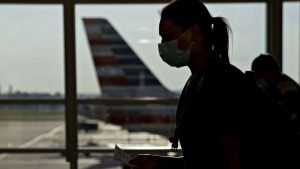JULY 27, 2020

Washington, D.C., will require certain residents and visitors entering the city from 27 states to self-quarantine for two weeks.
Anyone who traveled from the states, including nearby Delaware and North Carolina, on nonessential business must stay home for two weeks unless they must leave to get food or medical care.
D.C. Mayor Muriel Bowser announced the list of affected areas Monday morning, just as the quarantine rule took effect:
- Arkansas
- Arizona
- Alabama
- California
- Delaware
- Florida
- Georgia
- Idaho
- Iowa
- Kansas
- Louisiana
- Mississippi
- Missouri
- Montana
- Nebraska
- Nevada
- New Mexico
- North Carolina
- North Dakota
- Ohio
- Oklahoma
- South Carolina
- Tennessee
- Texas
- Utah
- Washington
- Wisconsin
The order mandates that quarantined individuals only allow caregivers into their home or lodging. They must monitor themselves for coronavirus symptoms.
If someone only passed through one of the states in a car or airport, they are exempt.
Those who traveled for an essential reason still are required to follow some restrictions. They should not leave their home or hotel room except to perform that duty or get food and medical care. They should also monitor themselves for coronavirus symptoms.
The city will publish the list of areas every two weeks on coronavirus.dc.gov. High-risk areas are locations where the seven-day moving average of daily new cases of the virus is 10 or more per 100,000 people.
Businesses, colleges and residencies may help enforce the order by refusing to provide entry or services to those who don’t follow the quarantine.
Maryland and Virginia are exempt from the order.
Violations are punishable with 90 days in jail or a $5,000 fine. The order is set to expire Oct. 9.
Bowser said the measures are necessary to prevent more D.C. residents from contracting the virus and dying. Additional restrictions may be necessary, depending on how the virus spreads and what the data shows.
Courtesy/Source: WASH4










































































































